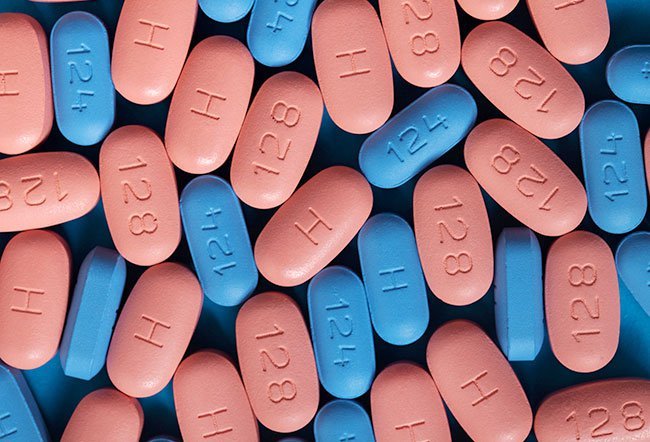What is the difference between PrEP vs PEP?

PrEP (short for Pre-Exposure Prophylaxis) is a medication you take proactively before possible HIV exposure. It can be taken daily or event-based, and is available under the brand-name pills Truvada and Descovy, or also as their generic equivalents such as Tenof EM, Ricovir EM, Tenvir EM, Taficita or Tafero EM.
PEP (short for Post-Exposure Prophylaxis) is a course of medication you take to prevent HIV infection after potential exposure to the virus. You have to start it within 72 hours of exposure to HIV, and it has to be taken every day for about a month.
What is PrEP?
We have a lot of information about what PrEP is, how to take it, as well as on the different types of PrEP. Check out the pages below to find out more about PrEP:
What is PEP?
PEP (or Post-Exposure Prophylaxis) is a combination of anti-HIV drugs taken to reduce the likelihood of HIV infection after a HIV-negative person has been exposed to the virus.
The principle of PEP is that early usage of HIV drugs could stop HIV from establishing itself in the body. Unlike PrEP, it is only taken after exposure to HIV, instead of taken preventatively.
Should I take PEP?
PEP is only prescribed by doctors in emergency situations to individuals who are at high risk of HIV infection, within 72 hours of possible HIV exposure.
Typically PEP is recommended to people without HIV who have:
- Had unprotected sex with a partner or people of unknown HIV status
- Shared equipment for injecting drugs
- Experienced sexual assault
The following risks typically do not warrant taking PEP:
- Human bites
- Oral sex
PEP should only be used in emergency situations. If you find yourself frequently in situations with HIV exposure, you should consider taking PrEP instead. You can find out more about PrEP here.
When can I take PEP and how is PEP taken?
Unlike PrEP, PEP medication is not a single tablet. It comes in a combination of three anti-HIV drugs which need to be taken daily for 28 days. PEP must be started within 72 hours of potential exposure, and you must not miss any doses or it may not be as effective.
You will need to do a HIV test to make sure you are HIV negative before starting PEP. This is to prevent HIV drug resistance from developing in case you are HIV positive.
After taking a full course of PEP, you will have to do further tests to confirm that you have not been infected by HIV.
How effective is PEP?
Studies have shown that when taken correctly, PEP can reduce the chances of HIV infection by up to 80%. The effectiveness of PEP depends particularly on when it is started; the sooner the better, and starting within 24 hours is best.
It is important to note that PEP does not cure HIV, and it does not work in all cases of HIV transmission.
Are there any side effects of PEP?
Some potential side effects of PEP include headaches, tiredness, nausea and diarrhoea. However, not everyone experiences these side effects, and they are usually minor and often get better over time as your body adjusts to the anti-HIV drugs.
How do I get PEP?
PEP is usually prescribed by a sexual health clinic, the A&E (or Accident & Emergency) department of a hospital, or emergency room doctor. General medical practitioners usually won’t be able to prescribe PEP.
If you find yourself frequently in risky situations involving exposure to HIV, we highly recommend you find out more about PrEP, which can be easily and cheaply purchased on PrEP Online.
More resources on PrEP vs PEP
- https://www.shl.uk/support/pep-and-prep
- https://medlineplus.gov/hivprepandpep.html
- https://www.cdc.gov/hiv/clinicians/prevention/prep-and-pep.html
- https://ght.org.uk/pep
- https://hivinfo.nih.gov/understanding-hiv/infographics/prep-vs-pep
- https://www.aidsmap.com/about-hiv/faq/whats-difference-between-prep-and-pep-hiv-prevention
- https://www.tht.org.uk/hiv-and-sexual-health/pep-post-exposure-prophylaxis-hiv





